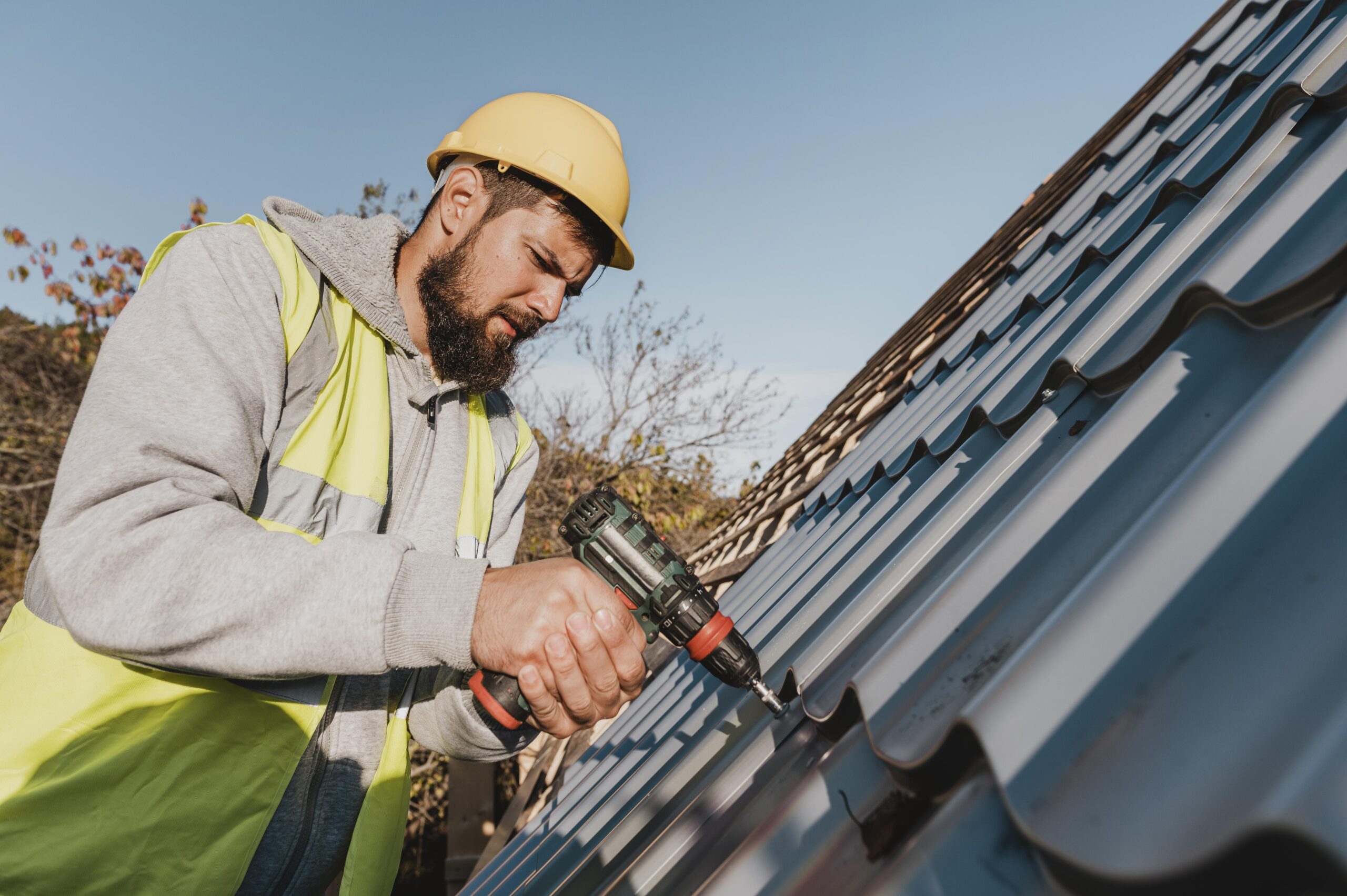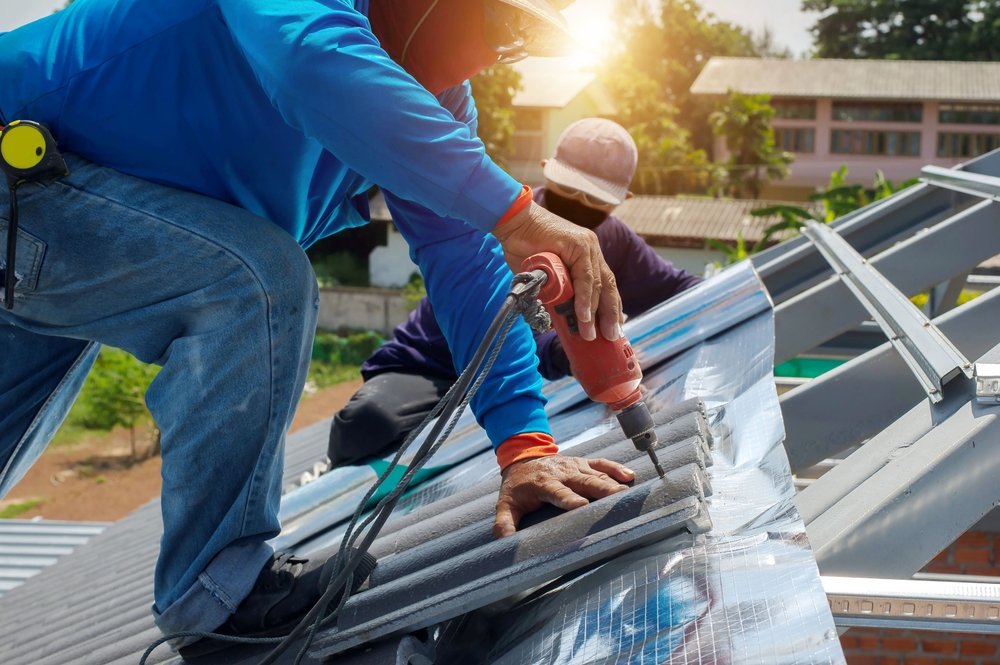Comprehending the Various Kinds Of Roof Coverings: A Comprehensive Guide for Homeowners
With a selection of alternatives-- varying from the conventional gable to the contemporary level-- each type presents distinct advantages and obstacles that ought to line up with the home owner's certain requirements and ecological factors to consider. As we explore the intricacies of different roof covering types, it comes to be evident that one size does not fit all; the best choice might stun you.
Saddleback Roof
Gable roofings, characterized by their triangular form, are amongst one of the most prominent roof styles due to their simplicity and performance in losing water and snow. This design features 2 sloping sides that meet at a ridge, enabling for reliable drainage and reducing the risk of water accumulation. The steep pitch generally related to gable roofings enhances their capability to handle hefty precipitation, making them ideal for various climates.
In enhancement to their functional benefits, saddleback roofs supply visual convenience. They can be adjusted to various building styles, from conventional to modern-day homes. The layout can also fit additional functions such as dormer windows, which boost natural light and ventilation in the attic room room.
In addition, gable roofs give ample area for insulation, adding to power effectiveness. Homeowners can select from a range of roof covering products, consisting of asphalt shingles, steel, and floor tiles, additionally boosting customization alternatives.
Despite their advantages, gable roofing systems might require added assistance in areas susceptible to high winds or heavy snowfall. Overall, the saddleback roof stays a popular choice due to its blend of capability, longevity, and visual charm.
Apartment Roofs
Level roofing systems are typically identified for their minimalist design and useful applications, especially in industrial and commercial setups (oahu roofing). These roofings feature a almost horizontal or horizontal surface area, which enables very easy building and functional area usage. While they might do not have the aesthetic allure of angled roofs, flat roofing systems use various advantages, especially in metropolitan atmospheres where making the most of area is important
One of the main advantages of level roof coverings is their availability. House owners can make use of the roof covering area for different objectives, such as rooftop gardens, terraces, or photovoltaic panel setups. Additionally, flat roof coverings are normally more cost-efficient to install and maintain compared to their sloped equivalents, as they require fewer products and labor.
However, level roofings do existing particular difficulties. Appropriate drain is important to prevent water pooling, which can lead to leaks and structural damages. Therefore, picking high-quality waterproofing products and regular examinations are important for guaranteeing long life. Common products used for level roof coverings include built-up roof (BUR), modified bitumen, and single-ply membranes, each offering distinct advantages. In general, flat roofs function as a functional and adaptable selection for numerous property owners and services alike.
Hip Roofings
Hip roof coverings are characterized by their sloped sides that converge on top, creating a ridge. This layout is distinctive from saddleback roofs, as all four sides of a hip roof incline downwards towards the walls, supplying an extra steady structure. The angle of the slopes can differ, permitting versatility in building aesthetics and functionality.
Among the main advantages of hip roofing systems is their ability to withstand hefty winds and negative weather condition conditions. The sloped surfaces make it possible for much better water drainage, reducing the risk of leaks and water damages. In addition, hip roofings provide raised attic space, which can be used for storage space or even transformed right into comfortable locations.
However, building a hip roof covering can be extra pricey and complicated than simpler roof covering types, such as gable roofs. The extra material and labor included in developing the slopes and making certain appropriate structural integrity can lead to higher costs. In spite of these drawbacks, several property owners prefer hip roofings for their sturdiness, visual appeal, and possibility for power effectiveness.
Mansard Roofings
Mansard roofs, often identified by their special four-sided design, function 2 slopes on each side, with the lower slope being steeper than the upper. This building design, originating from France in the 17th century, is not only visually attractive yet functional, as it makes the most of the useful room in the upper floorings of a structure. The steep lower slope enables even more clearance, making it a suitable option for attic rooms or loft spaces, which can be exchanged living areas.
Mansard roof coverings are characterized by their convenience, accommodating different architectural styles, from standard to modern. They can be built with various products, consisting of asphalt roof shingles, slate, or special info steel, giving property owners with a variety of choices to match their preferences and budgets. Additionally, the design permits the integration of dormer home windows, boosting all-natural light and air flow in the upper levels.
However, it is vital to consider the potential drawbacks. Mansard roofs might require more maintenance as a result of the intricacy of their style, and their steep slopes can be challenging for snow and rainfall drainage. Generally, mansard roofings incorporate elegance with usefulness, making them a prominent option among home owners seeking distinctive building functions.
Shed Roof Coverings
As home owners increasingly look for simpleness and functionality in their building designs, shed roofs have actually arised as a prominent option. Characterized by a solitary sloping airplane, a shed roofing system offers a minimal aesthetic that enhances different home designs, from contemporary to rustic.
One of the primary advantages of a shed roof is its straightforward building and construction, which typically converts to lower labor and product expenses. This design enables effective water drainage, minimizing the threat of leaks and water damage. In addition, the upright slope gives enough area for skylights, enhancing all-natural light within the interior.
Dropped roofings additionally provide adaptability in regards to use. They can be efficiently integrated right into enhancements, garages, or exterior frameworks like pavilions and sheds. Moreover, this roof style can accommodate different roof products, consisting of steel, asphalt tiles, or also green roofs, aligning with green campaigns.
However, it is necessary to think about regional climate conditions, as heavy snow loads might demand changes to the roof's angle or framework. On the whole, lost roofing systems provide a functional and visually pleasing choice for property owners wanting to make the most of performance without compromising style.
Verdict


Gable roof coverings, characterized by their triangular shape, are amongst the most popular roof designs due to their simplicity and efficiency in shedding water and snow. oahu roofing. The high pitch generally associated with gable roofings boosts their ability to deal with heavy rainfall, making them ideal for numerous climates
While they may lack the aesthetic charm of pitched roof coverings, level roofs provide many advantages, specifically in city environments where optimizing room is crucial.
